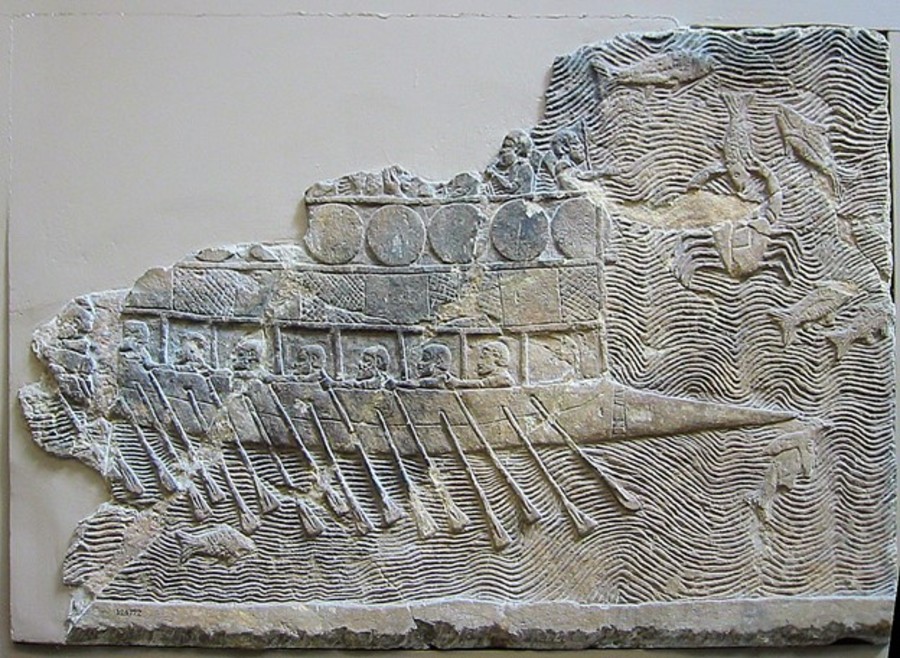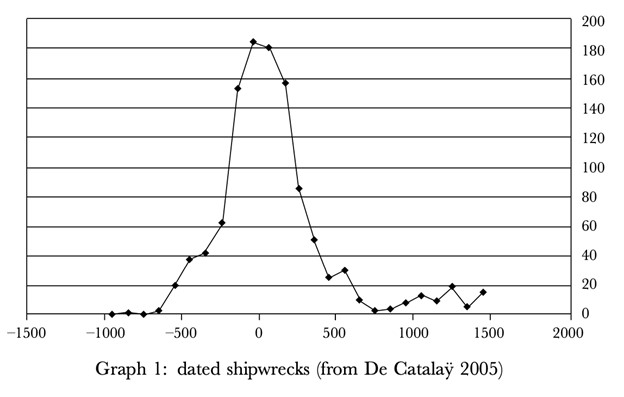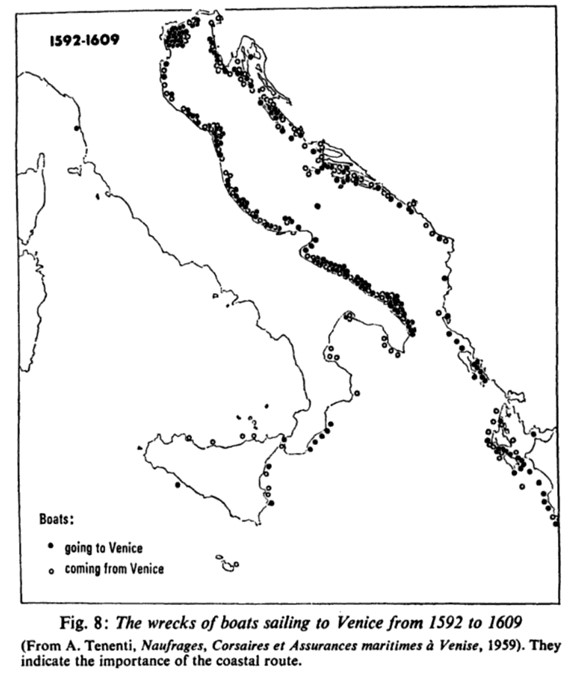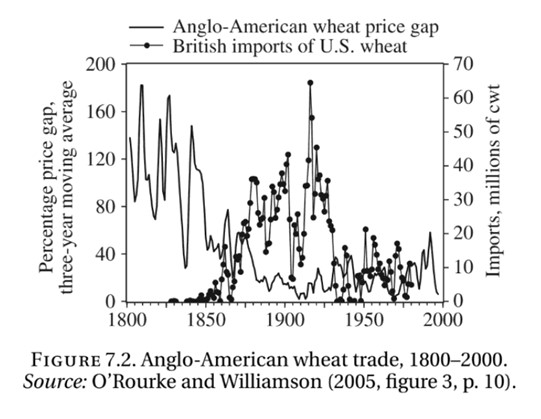
DAVIS KEDROSKY – NOVEMBER 19TH, 2020
EDITOR: KAREENA HARGUNANI
Commerce is a hallmark of civilizational development in histories of antiquity. The appearances of Greek coins in Egyptian coffers or Syriac amphorae in Southern Italy hint at the existence of a world of surprising interconnections, in spite of technological and geographical barriers. Berkeley economist Brad DeLong often recounts how the historian Herodotus, curious how tin—available nowhere in Greece, or in the Mediterranean, for that matter—had come to be incorporated into a forty-foot Athenian statue, traced purchases of the metal to the merchants of Syracuse. These sailors told him that the supply came from foggy islands far to the northwest, beyond the Straits of Gibraltar, where tin was abundant. Herodotus was skeptical, as he had a right to be; however:
“. . . the people in Syracuse had bought the tin from the markets in [Marseille]; and it had come down the Rhone through another chain of merchants; and had been transported from the Seine to the Rhone by another group; and then it had been carried down the river by the merchants of northern Gaul. Before that, it had been carried across the English Channel by yet another group of merchants, who had bought it from the tin miners of Cornwall, who had dug all this stuff out because, for some reason, these weirdos from the east were willing to pay an awful lot of money for this strange metal that was not terribly useful for them, but very, very useful when you have lots of copper, as you do in Greece, and when you can alloy it with ten percent tin to make hard and durable bronze.”
DeLong uses this story as an example of the extraordinary coordinating powers of the market, uniquely endowed with the power to move goods between unwitting chains of partners. Yet the passage of English tin to Greece, whose citizens had never heard of Cornwall, also illustrates the extent to which maritime commerce has structured human interactions from the earliest times. Ships and sailors tied invisible bonds between the ends of the earth, connecting the known and the unknown, promoting economic growth, and permitting specialization. The classicist Moses I. Finley argued that “[w]ater transport, in short, and especially sea transport, created radical new possibilities for the ancient town” far beyond the “four or five miles” of surrounding country accessible on foot. Price figures compiled from the edicts of the Roman emperor Diocletian suggest, astonishingly, that “a shipment of grain by sea from one end of the Mediterranean to the other would cost less than carting it seventy-five miles.” The distance between two points was measured not in lateral distance but in sailing time. Major cities arose only where there was either easy access to the sea or a navigable waterway.
Finley noted that “imports of food and other bulk commodities permitted a substantial increase in the size of the population, no longer held down by the limiting factor of local agricultural production, and an improvement in the quality of life.” The galley allowed the Russian to be a farmer to the Greek and the Attican to be Egypt’s miner. Athens was a prime example of the gains that outsourcing industry could generate. Without arable land, the population would have been drastically limited if enterprising mariners had not carried grain down the Dardanelles from the Black Sea to feed the city. Athenian naval might, moreover, would have been impossible without imports of timber from the Italian peninsula. Ships allowed Golden Age Athens to, as Keynes said of Britain, “live beyond its means on its wits.”
Premodern economic growth was generally stagnant worldwide as technological advances proved scarce, but the periods of efflorescence—to borrow a concept from historian Jack Goldstone—enjoyed by isolated civilizations before the Industrial Revolution often depended upon the sea. Rome reached a zenith of prosperity during the so-called “Golden Age” of the Antonines, after Pompey’s expulsion of pirates from the Mediterranean reduced the costs of shipping goods in bulk. Economist Peter Temin argues that this “allowed production to be located around the Mediterranean where conditions were most suitable. Instead of growing wheat in Italy, inhabitants of Rome ate porridge and bread made from wheat grown in Sicily, Egypt, Africa, Spain, and other places. Production was scattered because it was more efficient to grow wheat in these places than in Italy.” Ricardian theory holds that specialization “increases the income of both sending and receiving regions. Trade functions like an extension of resources in any one region; it loosens the constraint of limited land in an agricultural economy.” Rome thus freed land, labor, and capital to produce higher-value crops and manufactures for an increasingly wealthy urban population. The “Golden Age” (sometimes regarded as synonymous with the Pax Romana) can be indexed, unsurprisingly, by the dramatic spike in shipwrecks around the year 0. Seaborne commerce was the undisputed handmaiden of economic progress.

Image Source: Willem Jongman, “Gibbon Was Right: The Decline and Fall of the Roman Economy”
The French historian Fernand Braudel, in his seminal two-volume The Mediterranean and the Mediterranean World in the Age of Philip II, stressed the special role of maritime trade in the region. “The different regions of the Mediterranean,” he wrote, “are connected not by the water, but by the peoples of the sea,” adding that the various coastal and riverine routes were “the life-giving bloodstream” of the area. The lands between Europe and the Sahara acquired a shared character from the continuous wanderings of merchant vessels from port to port—a “unity” which belies both geographical immensity and cultural diversity. Unparalleled integration followed; Muslims from the far corners of the Levant lived in Spain, Italy, and France; Jewish communities formed in Alexandria and Constantinople; and Berbers could be found trading in the Balkans. The galleys of the Mediterranean bore the essence of an impossibly vast region, enabling regular communication and exchange between societies at the ends of the known world. Naval technologies and capabilities dictated settlement patterns and local prosperity; a preference for small vessels and coasting routes (which maximized profits on lightweight, expensive goods and minimized risks) privileged waypoint ports of otherwise dubious advantage.

Image Source: Fernand Braudel, The Mediterranean and the Mediterranean World in the Age of Philip II, Volume I
The water was destiny for civilizations, too, determining economic and political possibilities. A succession of maritime city-states—Venice, Genoa, Ragusa, and Leghorn, among many others—were launched to prominence and rivaled territorial empires by serving as middlemen on long-distance voyages and taxing passing vessels. Seaborne commerce, moreover, allowed these cities to specialize in high value-added industries, especially silk-weaving and wool-spinning, increasing local prosperity far beyond the resources of their limited hinterlands. This, in essence, was Adam Smith’s “pin factory” tale played out on a colossal scale—the raw materials of dozens of disparate regions from Croatia to Morocco were combined by the labor of a single locus, itself fed by importing grain from Sicily and Poland. Europe, Africa, and Asia could join together through integrated production processes.
All of these states simultaneously collapsed into insignificance once Portugal, spurred on by the invention of the caravel, established an oceanic route to India and East Asia around Cape Horn. This circuitous passage, impossible without the development of new navigation technologies and mathematics, bypassed the monopoly of the Italian states on the luxury goods trade. Consequently, Portugal, previously a fringe subsidiary of Spain, became a great power; Italy and the Middle East, perhaps the twin centers of the Eurasian world prior to 1500, slid into plague-stricken poverty. The discovery of the New World, which shifted the main axis of global commerce to the North Atlantic, only exacerbated Mediterranean insignificance. The North Sea region, which extended favorably from the European continent in the direction of the growing “triangular trade,” rose from Herodotus’s misty backwater to become the epicenter of the first truly global maritime network. Many historians, among them Robert Allen, have argued that the resulting income gains and market expansion created the necessary conditions for the British Industrial Revolution at the close of the eighteenth century.

Image Source: Research Gate
With the invention of the steam engine and the screw-propelled ironclad, the seas became avenues for the first era of globalization. With travel times tumbling and carrying capacities reaching unprecedented levels, a “Great Specialization”—mirroring the aforementioned Roman experience, in some respects—ensued, permitting the relocation of industries and labor to the cheapest possible regions. New crops were introduced to countries where climatic and wage conditions were suited to producing them; thus coffee came to Brazil, palm oil to West Africa, and sheep to Australia. The tropics shipped agricultural primary products to the Global North in exchange for the excess manufactures of France, Germany, and America, creating trade flows often managed under the aegis of the original multinational corporations. Each nation developed and honed a preferred industry to exploit as a niche in the global division of labor. Employment markets too became global. Now that the journey from London to Liverpool took only nine days (and cost only $15), rather than the month demanded during the Age of Sail, vast numbers of poor manual workers set off in search of more productive employment. Wages rose everywhere, especially in the West, where the augmentation of industrial demand, the export of low-wage laborers, and the availability of cheap raw materials accelerated industrialization.
The familiar modernity of these economic evolutions—bulk goods transport, specialization, and mass production—makes their appearance in the ancient world all the more striking. That similar factors contribute to growth processes across time and space, from the Eastern Mediterranean of antiquity to the modern Pacific, regardless of technological level indicates the existence of general laws governing the interactions of human societies. The responses of nations and peoples to possibilities for mutually beneficial exchanges are, as has been seen, eerily close to universal. This is history, if not repeating, at least rhyming.
Featured Image Source: Wikipedia
Disclaimer: The views published in this journal are those of the individual authors or speakers and do not necessarily reflect the position or policy of Berkeley Economic Review staff, the Undergraduate Economics Association, the UC Berkeley Economics Department and faculty, or the University of California, Berkeley in general.



